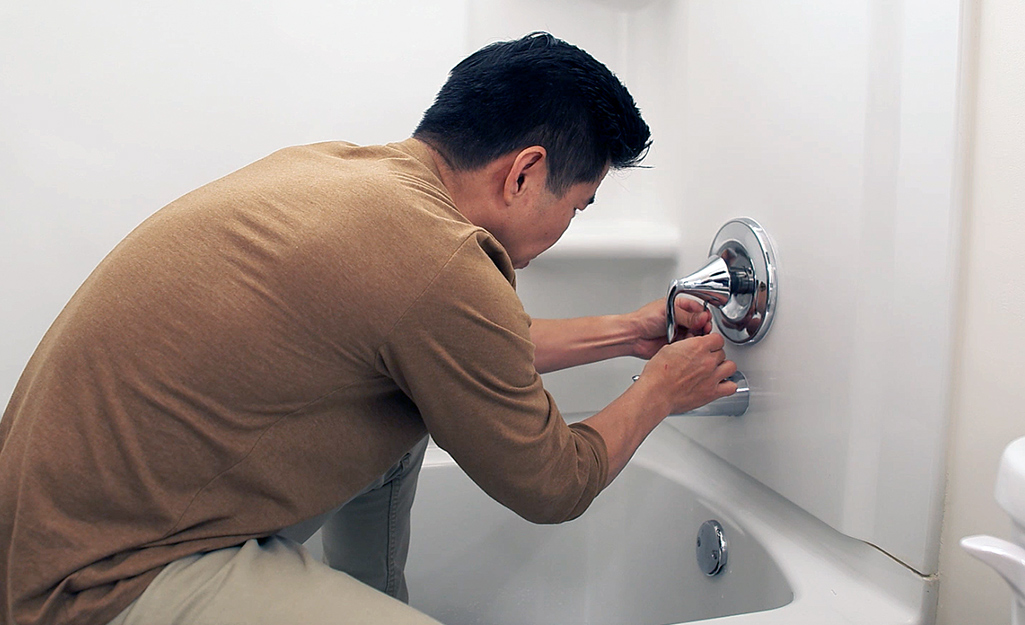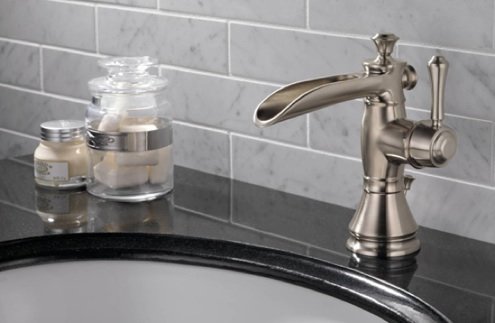Almost everyone is bound to have their unique thinking on the subject of How to Fix a Dripping or Leaky Faucet .

Dripping taps may appear like a small trouble, but their impact exceeds simply the aggravation of the noise. From wasting water to incurring unnecessary monetary prices and health and wellness threats, ignoring a trickling faucet can bring about different repercussions. In this short article, we'll explore why it's important to address this common household concern quickly and effectively.
Wastage of Water
Environmental Impact
Dripping taps contribute dramatically to water wastage. According to the Environmental Protection Agency (EPA), a single faucet leaking at one drip per second can throw away greater than 3,000 gallons of water each year. This not only stress water sources but likewise impacts ecological communities and wild animals based on them.
Step-by-Step Overview to Taking Care Of a Dripping Faucet
Devices Needed
Prior to attempting to take care of a dripping tap, collect the necessary tools, including a flexible wrench, screwdrivers, substitute parts (such as washers or cartridges), and plumber's tape.
Typical Tap Issues and Their Solutions
Recognize the sort of tap and the certain issue causing the drip. Usual problems include damaged washing machines, corroded shutoff seats, or malfunctioning O-rings. Describe maker guidelines or online tutorials for detailed guidance on repair work.
Financial Expenses
Increased Water Expenses
Beyond the ecological influence, leaking faucets can blow up water costs considerably. The collected wastage over time converts right into greater utility expenditures, which could have been stayed clear of with timely repair work.
Potential Residential Or Commercial Property Damages
In addition, extended leaking can bring about damage to components and surface areas bordering the tap. Water buildup can create discoloration, rust, and also structural issues if left neglected, leading to additional repair work expenses.
Health Problems
Mold and Mold Development
The consistent existence of wetness from a leaking faucet produces an excellent environment for mold and mildew and mildew development. These fungis not just compromise interior air high quality however additionally posture wellness risks, especially for individuals with respiratory problems or allergies.
Waterborne Conditions
Stagnant water in dripping faucets can come to be a breeding ground for microorganisms and various other microorganisms, raising the threat of waterborne illness. Pollutants such as Legionella bacteria grow in stationary water, possibly bring about severe diseases when ingested or inhaled.
Do it yourself vs. Expert Repair work
Benefits and drawbacks of DIY Repair Service
While some may attempt to deal with a dripping faucet themselves, do it yourself repairs come with their own set of difficulties. Without proper expertise and tools, DIY attempts can exacerbate the problem or cause incomplete fixings, prolonging the trouble.
Benefits of Hiring an Expert Plumber
Hiring a specialist plumber guarantees that the underlying source of the dripping faucet is dealt with successfully. Plumbing technicians have the know-how and tools to identify and fix tap concerns successfully, conserving time and minimizing the risk of more damages.
Environmental Responsibility
Individual Payment to Preservation
Taking responsibility for dealing with trickling taps aligns with wider initiatives towards water conservation and ecological sustainability. Every person's actions collectively make a considerable impact on protecting precious sources.
Sustainable Living Practices
By focusing on timely repairs and taking on water-saving routines, individuals add to sustainable living techniques that profit both present and future generations.
Preventive Measures
Routine Upkeep Tips
To prevent dripping taps, do regular maintenance such as cleaning up aerators, checking for leakages, and changing worn-out components without delay. Furthermore, consider installing water-saving tools or updating to a lot more efficient fixtures.
Value of Prompt Services
Addressing dripping taps as quickly as they're observed avoids more water wastage and potential damages, ultimately saving both water and cash over time.
Impact on Building Worth
Understanding of Well-Maintained Property
Keeping a home in good condition, consisting of dealing with upkeep concerns like leaking taps, enhances its viewed value and worth among possible customers or tenants.
Impact on Resale Worth
Properties with properly maintained plumbing fixtures, consisting of taps, command higher resale values in the property market. Resolving leaking faucets can contribute to a favorable impression during home assessments and arrangements.
Final thought
Addressing a trickling faucet exceeds plain ease; it's a necessary action toward conserving water, decreasing economic expenses, and protecting wellness and property. Whether with do it yourself repair services or expert help, acting to deal with dripping taps is a tiny yet impactful way to promote responsible stewardship of resources and contribute to a much healthier, much more sustainable future.
How to Fix a Dripping or Leaky Faucet
A leaking faucet is one of the most common problems that homeowners encounter, but it being commonplace doesn’t make it any less annoying. The constant drip drip drip of a leaking bathtub faucet, showerhead, or sink tap can disturb your home’s serenity. Left neglected, a dripping faucet can also result in higher water bills and discoloration or mold growth in your sink or plumbing fixtures.
Fortunately, you don’t have to be a trained plumber to know how to stop a dripping faucet. With some basic tools, replacement parts, and a little patience, leaky faucet repair is a breeze. In this article, we’ll explain what causes dripping faucets and how you can fix them.
What Causes a Leaking Faucet?
Kitchen and bathroom faucets come in all manner of designs, but most involve some combination of valves, O-rings, seals, and washers. The O-ring is usually the weakest link, but any one of these pieces can wear down over time. Heat, moisture, temperature fluctuations, minerals, mold, and movement can contribute to warping and corrosion, breaking the watertight seal. This just comes with the territory of being a homeowner. Everything is always subject to wear and tear, and some component parts of your appliances and fixtures need to be replaced on occasion. At least replacement O-rings are cheap!
More rarely, dripping faucets can be a symptom of excessively high water pressure. Were this the case in your home, you would probably notice that the leak is not isolated to one faucet. Water pressure issues are harder to resolve on your own. We recommend contacting a professional plumber if you suspect your water pressure is too high.
How to Fix a Dripping Faucet
Pipe wrench or monkey wrench Allen wrench set Screwdrivers Old towel or rag Shut off the water.
Before you do anything, you need to turn off the water to keep from drenching your kitchen or bathroom. You should find a valve under the sink and against the wall. Once you’ve turned this valve, try turning the faucet on to confirm that the water source has been cut off.
If you can’t locate your local valve for the faucet you’re working on, you can always shut off the water to the house at the main valve. Of course, this will prohibit anyone from using the sinks, showers, or toilets while you’re working on the faucet that’s giving you trouble.
Plug or block the drain.
You’ll be disassembling the faucet and removing some small bits of hardware. Plug the drain with a stopper or rag to avoid the possibility of a small screw falling into your P-trap.
Take apart the faucet assembly.
There are several varieties of kitchen and bathroom faucets, each with its own manner of assembly. For detailed instructions on how to disassemble your faucet, you can refer to the fixture’s manual or contact the manufacturer. If you know whether you have a ball, disc, cartridge, or compression faucet, you can find detailed schematics online.
In general, you need to begin by removing the faucet handles. You might notice a small screw that you’ll need to remove with a screwdriver or Allen wrench. If you don’t see any visible securing hardware, it’s likely hidden under a decorative cap that can be unscrewed or popped off with flathead screwdriver.
Remove each piece methodically, consulting a schematic when necessary. Take notes or arrange the pieces in such a way to make it easier to correctly reassemble the faucet later.
Remove the cartridge.
Once you’ve removed the handles and securing hardware, you should be able to remove the valve cartridge or stem. Some cartridges will slide right out. Other faucet models will require you to loosen a nut with a pipe wrench before you can remove the valve stem.
Examine the exposed hardware.
With the cartridge or stem removed, inspect the component parts. Check the rubber O-rings for wear and tear. Also examine the seat washer for corrosion or other damage. These pieces are usually the responsible parties for a dripping faucet, but it’s worth inspecting the other component parts while you have the faucet disassembled.
Find replacement parts.
Once you’ve identified which faucet component has failed, find an identical replacement. Your local hardware store should have O-rings, seat washers, and other standard components in stock. If you have a luxury or uncommon faucet, you may have to contact the manufacturer for a replacement part.
It’s a good idea to take your old parts with you to the hardware store so you can compare them with the store’s inventory and be sure you’re purchasing the correct replacement.
Reassemble the faucet.
With your new parts in hand, reconstruct the faucet and handles. Don’t be tempted to overtighten screws or nuts. You might think this could create a better seal, but it can instead damage or bend a delicate part of the assembly and create a new problem for you.
Turn on the water and test the faucet.
The only thing left to do is test your work. Unplug the sink, turn the water back on, and try the faucet. Congratulate yourself on a job well done!
https://www.libertyhomeguard.com/how-to-fix-a-dripping-or-leaky-faucet/

Do you like reading about How to Fix a Dripping or Leaky Faucet ? Give a short review directly below. We'd be pleased to see your ideas about this blog. Hoping that you come back again soon. Feel free to set aside a second to promote this blog posting if you liked it. Thanks a lot for taking the time to read it.